
Following our previous visit to Los Angeles-based Alloi Architecture + Construction, we are moving our Meet Your Next Employer series to New York this week to explore the work of Perkins Eastman.
Founded in 1897, the firm has grown to encompass 1,100 employees across 23 global studios. Operating along the ethos of ‘Human by Design,’ the firm has built a multi-sector portfolio “mindful of environmental, technological, economic, and social shifts.” In recent months, the practice was listed among the top-performing firms of 2023 by CoStar, as reported by Archinect in June.
Over on Archinect Jobs, the firm is currently seeking a Project Architect to join their Boston office. For candidates interested in applying for the position or anybody interested in learning more about the firm’s output, we have rounded up four educational projects that exemplify the firm’s ethos.

For Morrisville State College, Perkins Eastman overhauled a former agricultural building to accommodate the school’s Center for Design and Technology. While the character of the former dairy barn was preserved, the 23,000-square-foot building was clad in energy-efficient glass to improve environmental performance and enhance natural light. Inside, a dramatic atrium leads visitors to a central gallery while additional studio space on the mezzanine level connects to a cylindrical stair recalling the grain silos that once served the barn.

“Communal spaces, including a digital production and photo area, a woodshop and universal laser cutter, and rapid prototyping machines, provide further support for this 21st-century educational environment,” the firm explains. “The simple and bold design gesture of the vernacular architecture lends the building an elegant presence that serves as a refreshing counterpoint to the typical campus building while also paying quiet homage to its agricultural lineage.”
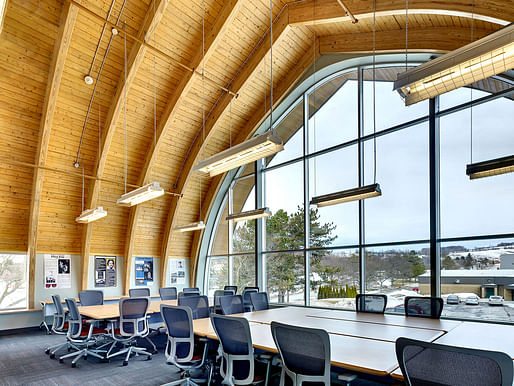
The Deanwood Community Center and Library is a joint-use facility housing educational, recreational, and athletic programs, with programs such as an early care and education center, recreation pool, sound recording studio, and public library. Sustainability formed a driving principle for the scheme, including a focus on water conservation, materials, and energy reduction. A 7,000 square-foot bio-retention garden and a below-grade sand filtration tank naturally clean and retain stormwater on the site before it drains off into the city sewer system and the Anacostia River, while recycled content and renewable resources in the materials are incorporated both inside and outside the facility.
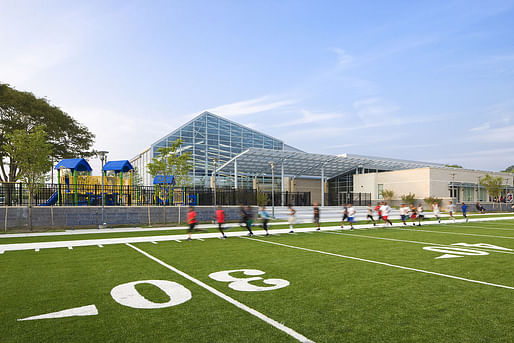
“One of the most significant strategies contributing to giving the Center a more sustainable footprint is strategic co-location,” the firm explains. “Located directly across the street from a Metro stop as well as a public school, residents can walk, take the Metro or bus, or drive to access “one-stop shopping” for public health, educational, and recreational services. Designated parking for low-emitting vehicles, extensive bike parking, and the project’s adjacency to the Metrorail system and multiple bus lines further contribute to reductions in greenhouse gas emissions.”
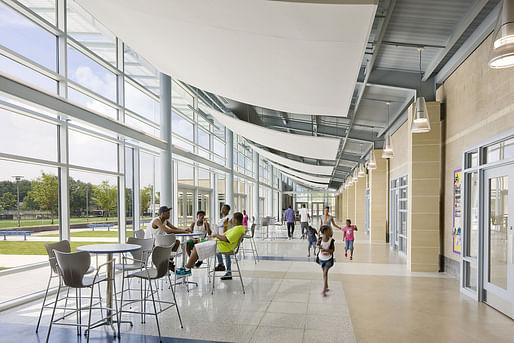
The new campus for the Indian School of Business at Mohali covers 70 acres and houses 1,200 students. Sitting at the foothills of the Himalayas, the team designed the campus to be “of its time yet timeless” and “uniquely responsive to its site yet rooted in international best practices.”

“Drawing on Vastu principles as well as architectural precedents that speak to Indian history, culture, and climate—Le Corbusier’s Capitol Complex and Joseph Allen Stein’s Habitat Centre among them—the 725,000 gsf (Phase 1; 2M gsf all phases) campus honors India’s strong architectural legacy while it sets the stage for the future of international business,” the firm notes. “Through state-of-the-art facilities, campus placemaking, and strong contextual connection to its natural environment and the surrounding Knowledge City community, this new campus fully represents the identity of the institution and its educational mission.”
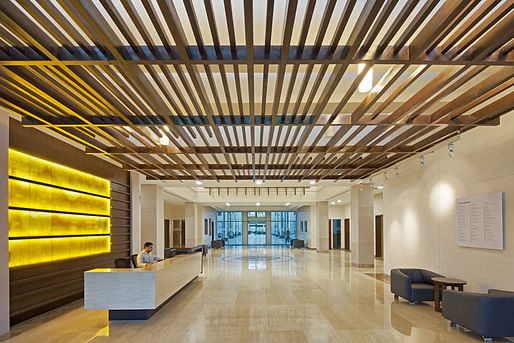
For the New York location of Avenues: The World School, Perkins Eastman and Bonetti/Kozerski Studio overhauled the 1928 Cass Gilbert warehouse in the Chelsea neighborhood of Manhattan, balancing the retained historic exterior of the warehouse with an interior “decidedly forward-looking in their programming, technology, finishes, and amenities.” The ten-story building contains four distinct schools stacked atop one another, with high ceilings and natural light characteristic of the Manhattan loft style.’
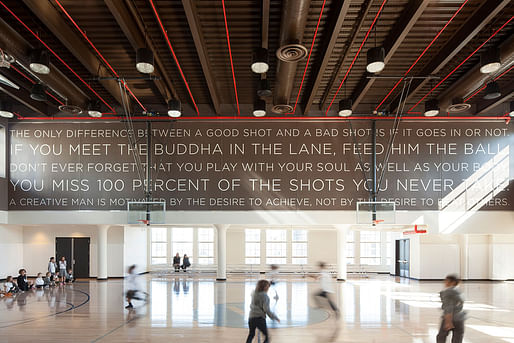
“Taking inspiration from Avenues’ vision for a new kind of progressive education, and reflective of its Chelsea location—New York City’s neighborhood of art galleries and high-concept fashion—the design provides opportunity throughout the building to display art, both by famous artists and the students themselves—a further nod to the client’s desire to inspire beyond preconceived norms,” the firm explains. “With subtle yet sophisticated interior design, the school overall provides a serene environment for learning.”
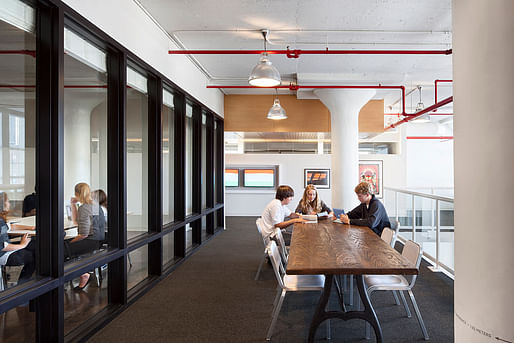
Meet Your Next Employer is one of a number of ongoing weekly series showcasing the opportunities available on our industry-leading job board. Our Job Highlights series looks at intriguing and topical employment opportunities currently available on Archinect Jobs, while our weekly roundups curate job opportunities by location, career level, and job description.
No Comments
Block this user
Are you sure you want to block this user and hide all related comments throughout the site?
Archinect
This is your first comment on Archinect. Your comment will be visible once approved.